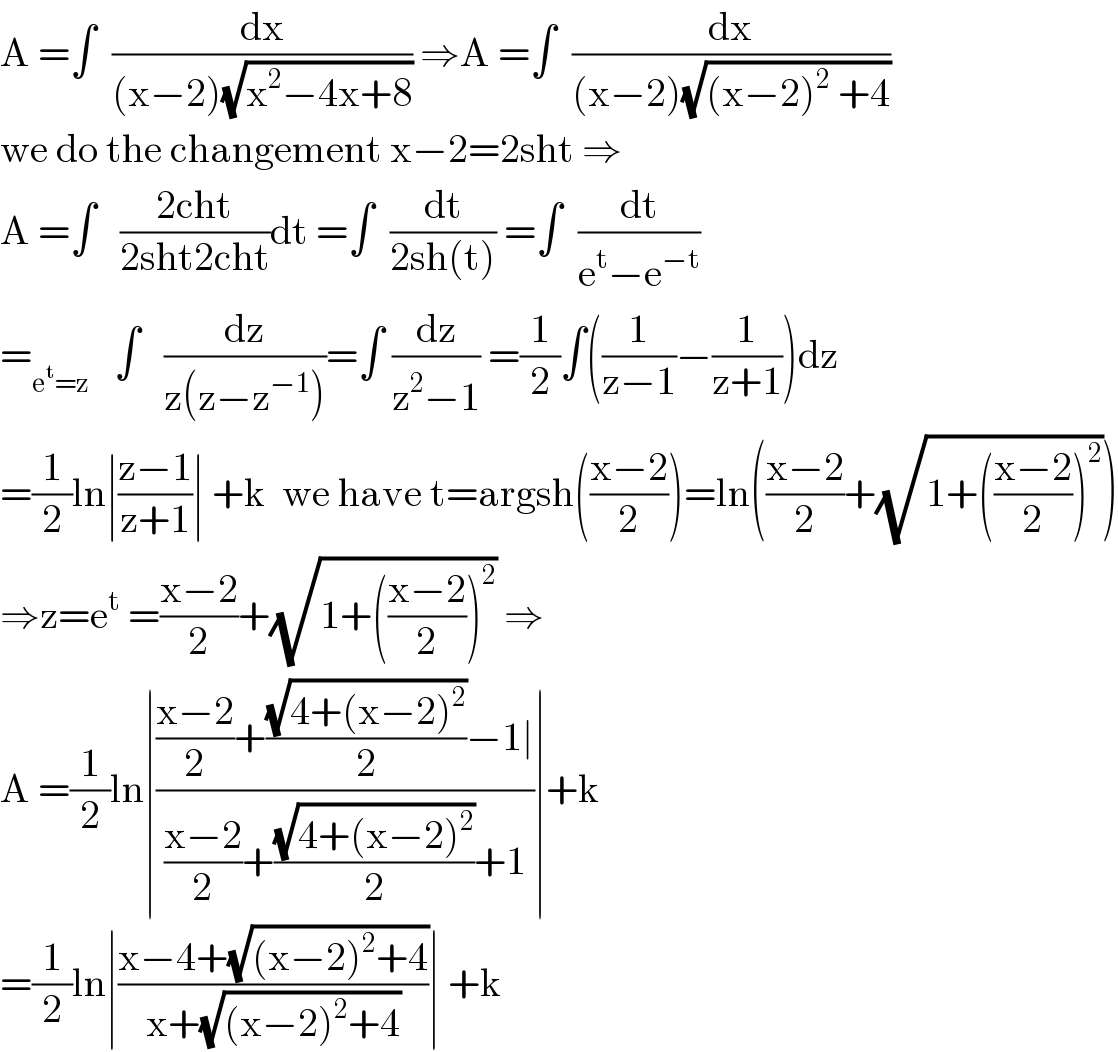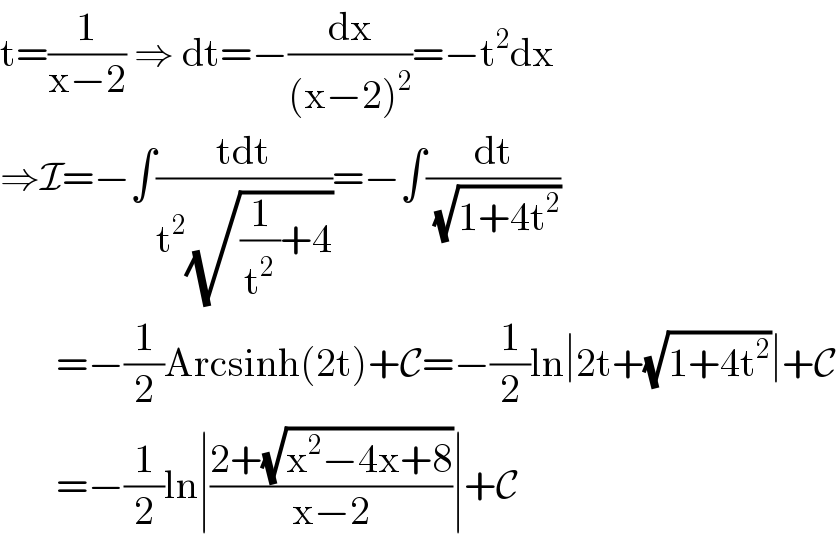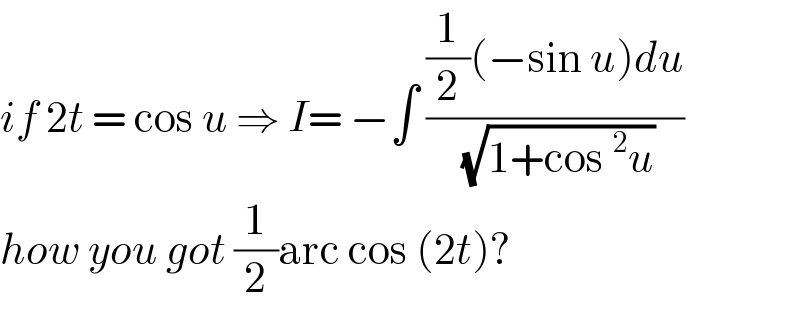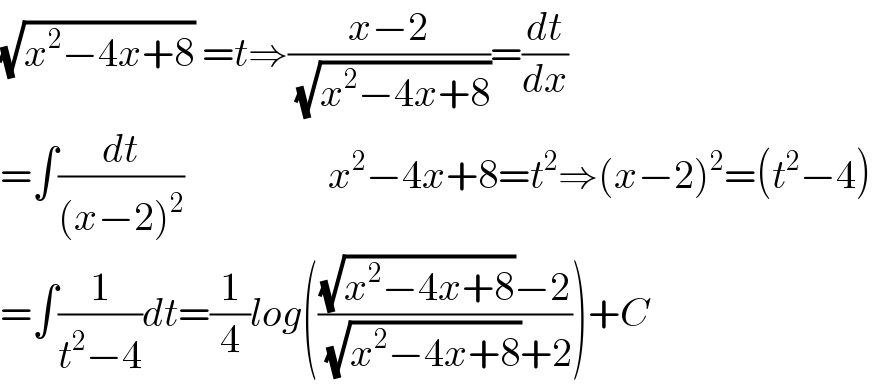
Question and Answers Forum
Question Number 124000 by joki last updated on 30/Nov/20

Answered by liberty last updated on 30/Nov/20
![∫ (dx/((x−2)(√((x−2)^2 +2^2 )))) ;[ x−2=2tan r ] μ(x)=∫ ((2sec^2 r dr)/(2tan r (√(4sec^2 r)))) = (1/2)∫ (( dr)/(sin r)) μ(x)=(1/2)∫ cosec r dr = (1/2)ℓn ∣ cosec r − cot r ∣ + c μ(x)=ℓn (√((((√(x^2 −4x+8)) )/2)−(2/(x−2)))) + c](Q124002.png)
Answered by mathmax by abdo last updated on 30/Nov/20

Answered by Ar Brandon last updated on 30/Nov/20

Commented by liberty last updated on 30/Nov/20

Commented by Ar Brandon last updated on 30/Nov/20
Found my mistake, thanks
Answered by MJS_new last updated on 30/Nov/20
![∫(dx/((x−2)(√(x^2 −4x+8))))= [t=((2+(√(x^2 −4x+8)))/(x−2)) → dx=(−(x^2 /2)+2x−4+(√(x^2 −4x+8)))dt] =−(1/2)∫(dt/t)=−(1/2)ln t = =−(1/2)ln ∣((2+(√(x^2 −4x+8)))/(x−2))∣ +C](Q124042.png)
Answered by Dwaipayan Shikari last updated on 30/Nov/20

